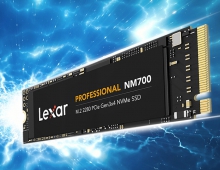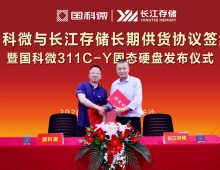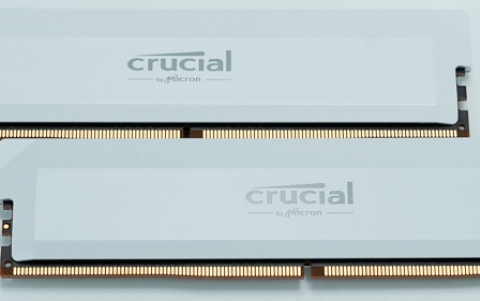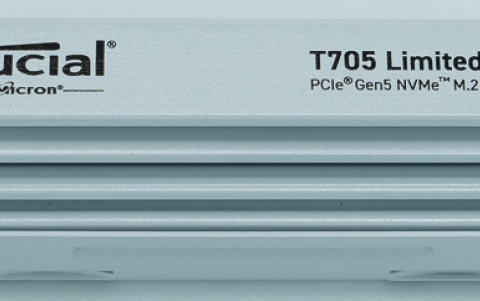
HGST Introduces NVMe PCIe SSDs, 10TB HDD
HGST is strengthening its position in the enetprise storage market with the announcement of the new series of NVMe-compliant Ultrastar SN100 PCIe SSDs, its second-generation helium-filled 8TB HDD and an SMR-based 10TB HDD.
HGST's NVMe PCIe SSDs, integrating Toshiba's current MLC NAND Flash, features the standardized NVMe protocol for PCIe SSDs, which enables broad system interoperability and ease of deployment.
 Targeting application and database acceleration, virtualization and big data analytics, the Ultrastar SN100 series of SSDs will be offered as a half-height, half-length (HH-HL) add-in card, as well as in a standard 2.5-inch drive form factor, with capacities up to 3.2TB. For added NAND Flash endurance and reliability, the Ultrastar SN100 series will deploy HGST's CellCare NAND management technology optimized for Toshiba MLC NAND Flash.
Targeting application and database acceleration, virtualization and big data analytics, the Ultrastar SN100 series of SSDs will be offered as a half-height, half-length (HH-HL) add-in card, as well as in a standard 2.5-inch drive form factor, with capacities up to 3.2TB. For added NAND Flash endurance and reliability, the Ultrastar SN100 series will deploy HGST's CellCare NAND management technology optimized for Toshiba MLC NAND Flash.
In addition, HGST will be implementing NVMe-compatible extensions aimed at delivering easier application integration by enabling value-add software layers to interface with the PCIe SSD's NAND flash management. Utilizing these HGST extensions, software can interact with the SSDs in a more comprehensive way and realize data management optimizations that deliver two times higher performance and two times better endurance compared to solutions without this capability.
HGST is currently sampling the Ultrastar SN100 SSD series.
 HGST also announced today that all its future enterprise capacity HDDs Will utilize its HelioSeal platform, a helium sealed HDD technology.
HGST also announced today that all its future enterprise capacity HDDs Will utilize its HelioSeal platform, a helium sealed HDD technology.
HGST's 8TB Ultrastar He8 is the company's second-generation helium-filled HDD. The 8TB Ultrastar He8 enables more efficient data center designs and operations by reducing the physical and carbon footprint of the overall storage systems. Addressing the largest data center challenges, the sealed, helium-filled hard drives enable lower power consumption and higher density storage systems, requiring less rack space. Additionally, the helium-sealed hard drives require less cooling and can be used more reliably in wider operating environments such as ambient data centers. Based on mainstream perpendicular magnetic recording (PMR) technology, the Ultrastar He8 comes in both 8TB and 6TB capacities.
HGST also announced the first data center-class 10TB HDD for cloud and cold storage applications. This drive sets capacity leadership at the lowest $/TB and watt/TB by harnessing two complementary technologies: HelioSeal technology and Shingled Magnetic Recording (SMR). The company is currently sampling the new 10TB HDDs.
Last but not least, the Ultrastar 7K6000 is HGST's seventh generation air-based platform is shipping now, at high capacities (5TB and 6TB) in a standard 3.5-inch HDD design. The 6TB Ultrastar 7K6000 delivers 1.2TB per disk in a five-disk solution.
About SMR
Shingled Magnetic Recording (SMR) was named after roof shingles. With SMR, relatively wide tracks are written to the disk and successively written data tracks partially overlap the previous ones, similar to the manner roof shingles are applied.
Writing narrower tracks has always meant narrowing the width of the poles of a tiny magnet on the read/write head. When energized, a magnetic field emanating from the poles writes and erases data by flipping the magnetization of small regions, called bits, on the spinning disk directly below. But narrowing the poles also reduces the strength of the writing magnetic field, so they can’t be shrunk to the point where the field can’t flip a bit’s magnetization.
One way to get the data-density benefit of narrower tracks without actually writing them is to write relatively wide tracks that partially overlap the previous ones. This technique is called shingled magnetic recording (SMR) because successively written data tracks overlap in a manner similar to roof shingles.
In practice, SMR’s overlapping tracks are best suited for continuous writing/erasing rather than small random-access updates. In some cases, an ideal solution could be to designate part of a disk to have high-density shingled tracks for storing log files while the rest is not shingled to permit more rapid random access at a lower data density.





















